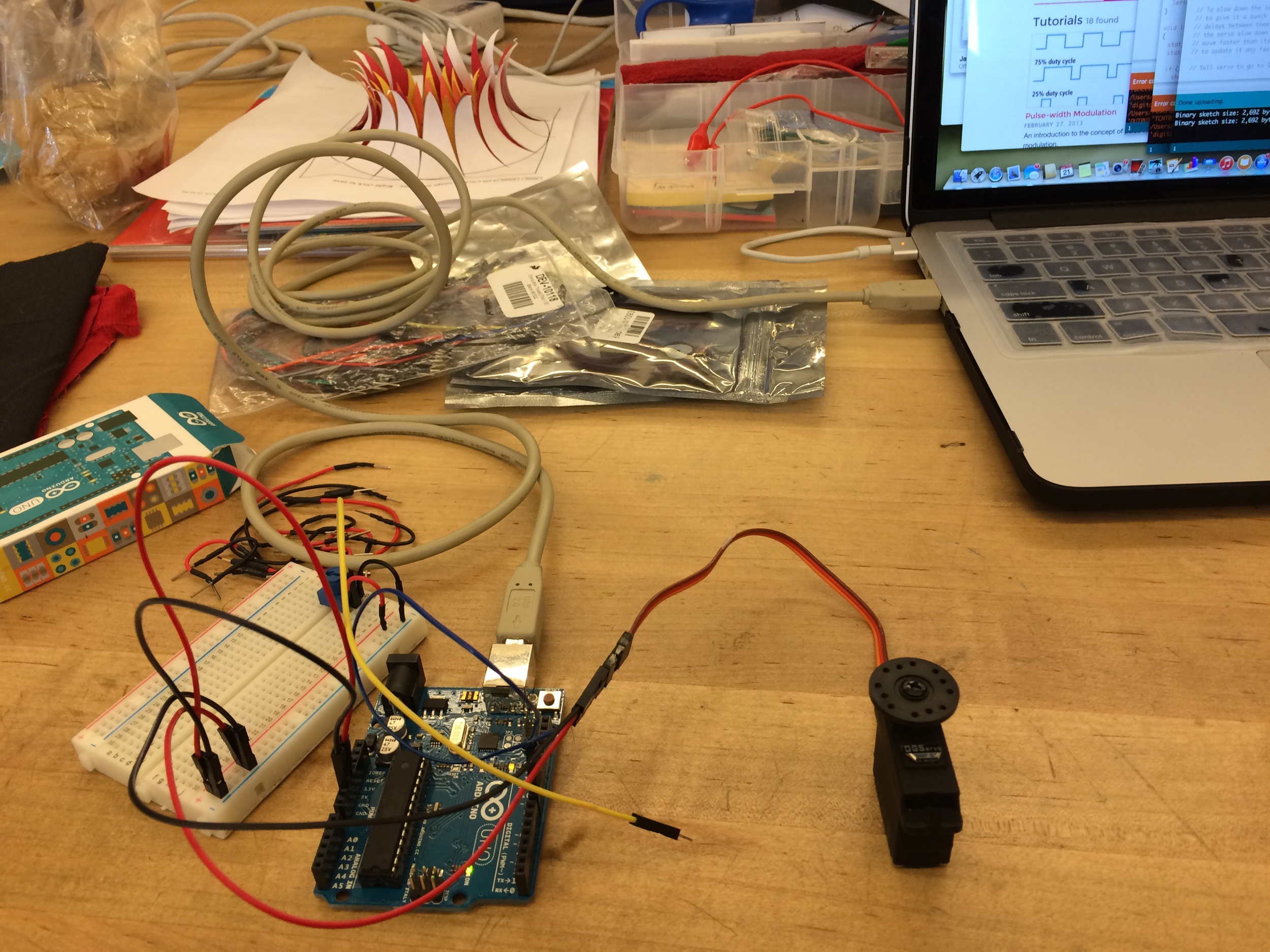Wearable Tech | AccentBot
Individual Project
ABSTRACT
The monochrome nature of mens’ black-tie clothing discourages significant personal expression through garments. Some men seek modes of expression in the accent opportunities of partially hidden socks, pocket squares, and ties. My suit coat provides personalized expression on the major garment of the outfit by implanting a burst of color on the front of the coat that is activated by the wearer buttoning the middle button. AccentBot reflects edginess, while providing a flare of expression that maintains sophisticated consistency with the atmosphere of these classy events.
BRIEF
This project in an emphasis on the relationship between technology, fashion and aesthetics. Research what functions a garment or an accessory already has culturally, socially and economically. Think of the technology as secondary and do not get stuck on just the technical part. Use it to enhance a relationship that the wearer has with something tangible or intangible.
RESEARCH
As I researched mens’ trends at black-tie type events I noticed that mens’ styles fall at either one end of the spectrum
or the other: they either dress in very monochromatic black suits with very little color (if any), or they break all of the rules and dress in very outright rebellious suit options. What about the men that want to remain very sophisticated and not push the limits to the extreme? These men love color accenting, which is obvious with their accent choices, but they are limited to hiding most of their color in the lining of their suits, their socks, and pocket squares. I explored how I might enhance the opportunity to share more dramatic color, without forcing these men into the realm of the other end of the spectrum.
INTERACTION MODEL
MATERIALS & DIAGRAM
PROCESS
My first concepts were based on modifying a suit coat to have spikes or quills lining the back of the coat, and when the person wearing the coat signaled a change in excitement level the spikes/ quills would rise and reveal color. This idea would have been connected to a heart pulse monitor, and the reaction would happen automatically. The spikes/quills were meant to represent edginess, while the color beneath them would be the accent color revealed.
As I paper-prototyped this idea I realized the spikes/ quills were too aggressive, and did not reveal as much color outrightly as I had imagined. I think the metaphor of a porcupine was too direct. I thought about other metaphors that would possibly fit. I decided that a peacock metaphor was too overt, and that my coat was more about display for style, not for attention or for mating. I also thought about other types of feather displays, but felt they lacked the edginess I wanted to maintain as this was to be a masculine piece of clothing worn at dynamic events.
I came across these examples in my research, and felt that the metaphor of a flower was just right for my project. This is not just any flower; this is a sharp flower, with many layers. This flower has the impression of momentum and speed. I decided to incorporate a variation of this form in my project.
The first step was to work on the mathematics of a circular form like this. I had to decide how many pedals, and how many increments of layers. I proved the possibility of constructing the form. Then I had to prototype the movement and mechanics of raising and lowering the pedals. I tested different materials for pulling and pushing. I tested different materials for springiness. I also tested molding the paper with water to see if the water provided a better hold of the form, or more reliable springiness.
As I was continuing to research how this interaction would occur, I realized that it should be the person’s choice when the color burst is activated. This is about choice of expression, so using a sensor that takes that choice and timing away from the user would change the point of the story.
I decided to make the interaction a streamlined part of the avid suit-wearer’s process. Every suit wear gets to choose when they want to button their suit and when they do not want to. It is such a simple movement that is connected to such a definitive choice, that it made perfect sense for me to integrate the sensor into the buttoning flow.




















